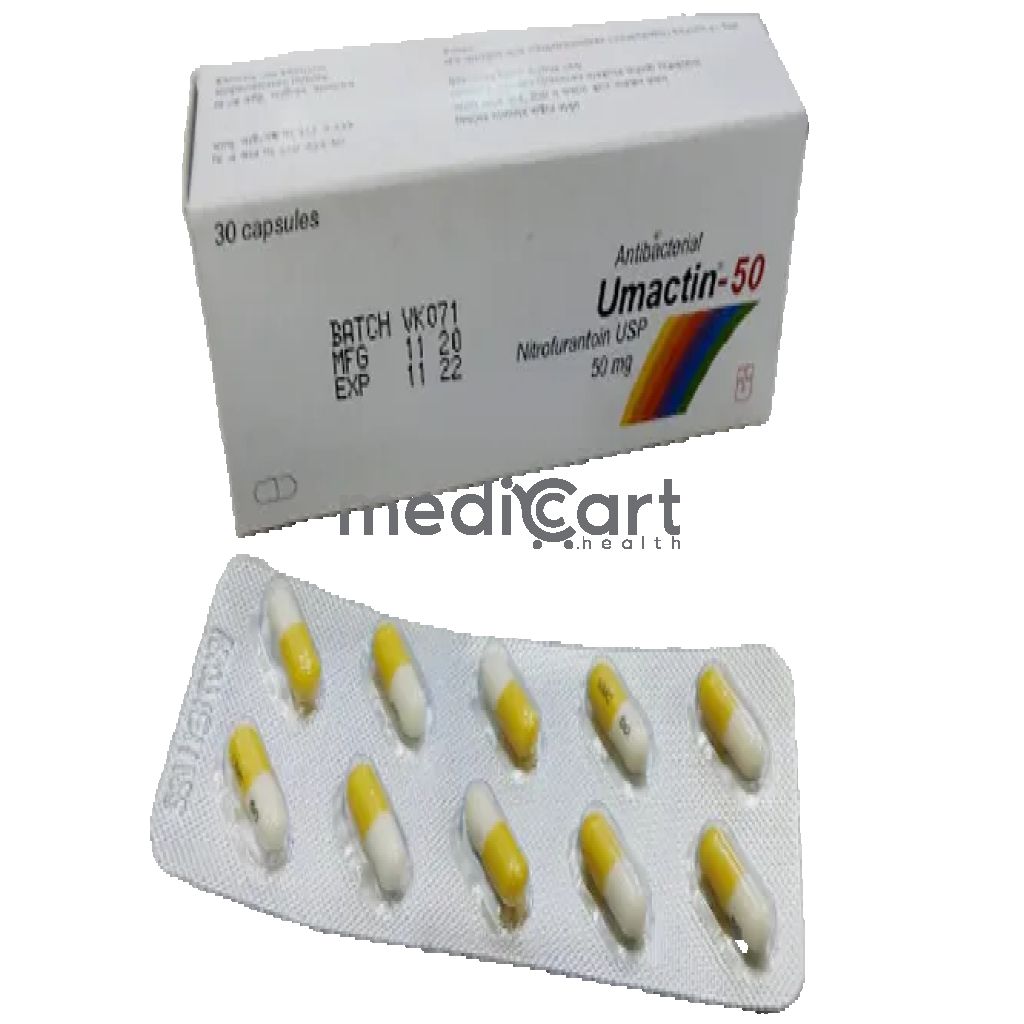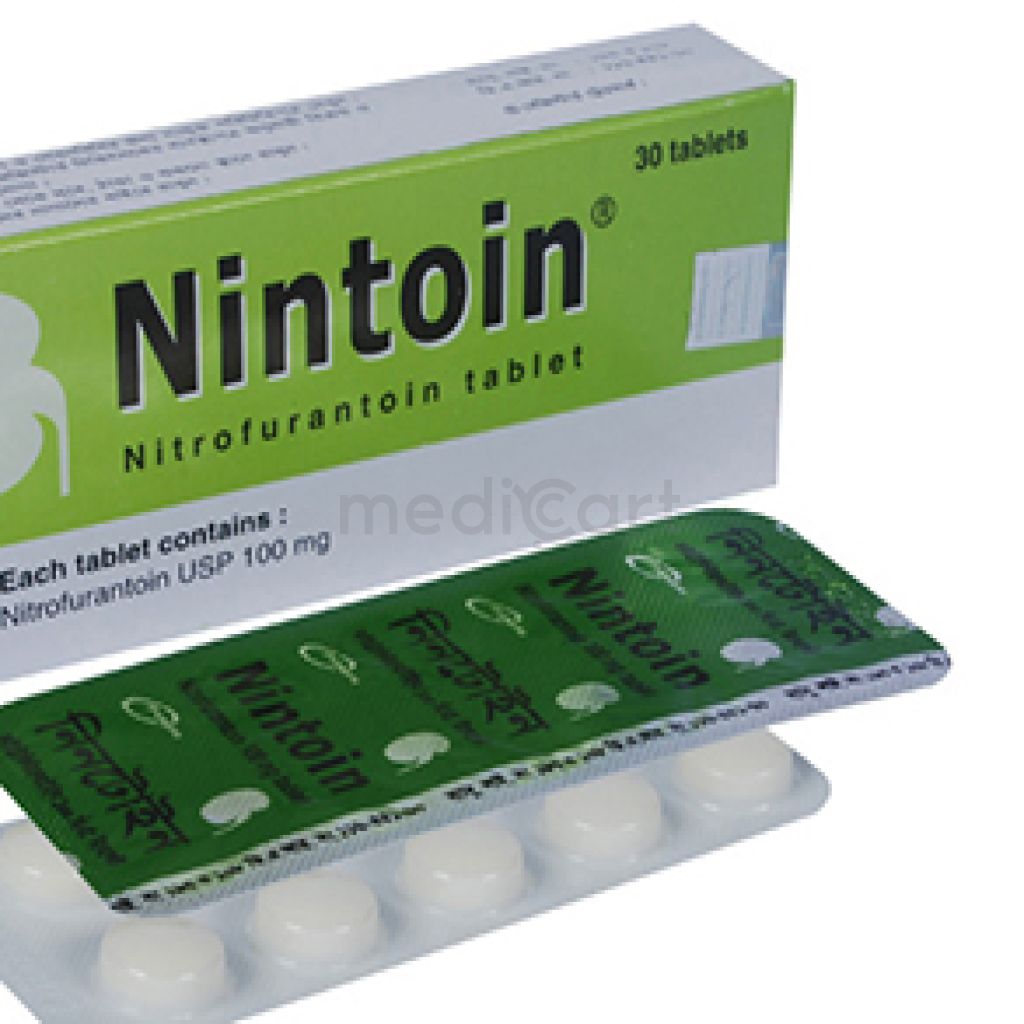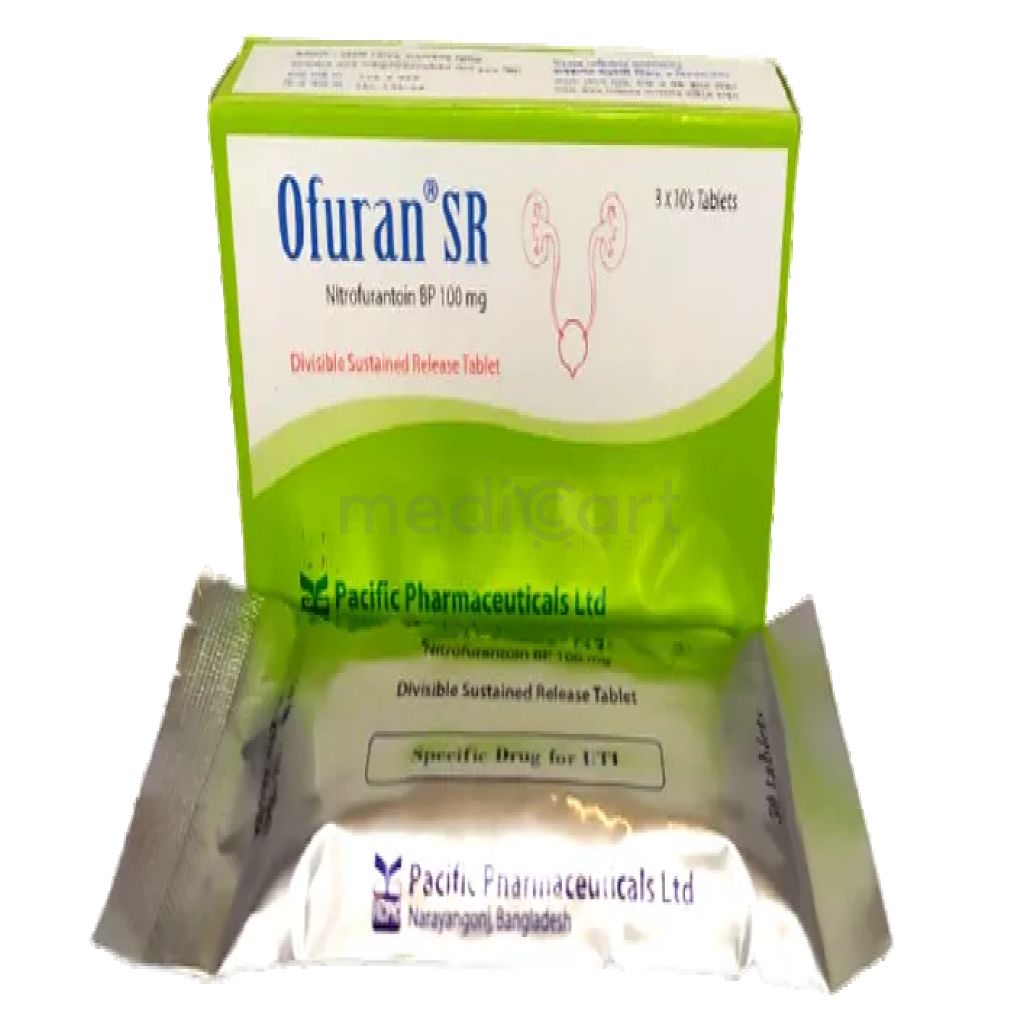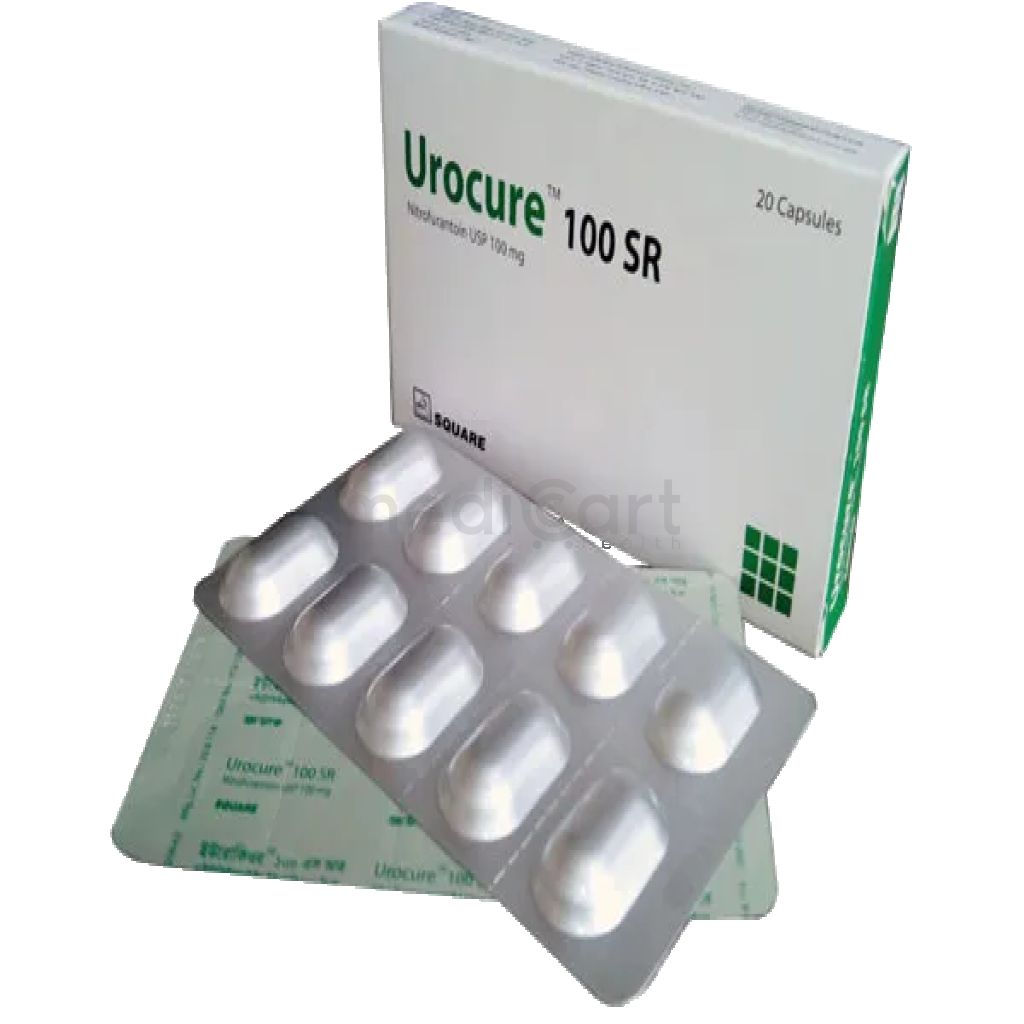

Umactin 50 mg Cap
Capsule* Delivery will be done in Dhaka city only.
Alternative Product
More Information About - Umactin 50 mg Cap
Description
Generic Name
Nitrofurantoin
Precaution
Elderly. Monitor hepatic and pulmonary function during prolonged therapy. Pre-existing pulmonary, hepatic, neurological, or allergic disorders, predisposition to peripheral neuropathy e.g. renal impairment, anaemia, DM, electrolyte imbalance, debility, vitamin B deficiency. Withdraw if signs of peripheral neuropathy occur. Lactation. Lactation: Enters breast milk; discontinue drug or do not nurse
Indication
Uncomplicated UTI, Urinary Tract Infection
Contra Indication
Severe renal impairment (anuria, oliguria, significantly elevated serum creatinine, CrCl <60 ml/min). Hypersensitivity to nitrofurans, G6PD deficiency, infants <3 mth. Pregnancy at term, during labour and delivery, or when the onset of labour is imminent.
Dose
N/A
Side Effect
Nausea, vomiting, anorexia, abdominal pain, diarrhoea; headache, drowsiness, vertigo, dizziness, nystagmus, benign intracranial hypertension; rash, urticaria, pruritus, fever, sialadenitis, angioedema, erythema multiforme, exfoliative dermatitis, pancreatitis, lupus-like syndrome, myalgia, arthralgia; acute pulmonary sensitivity reactions; megaloblastic anaemia, leucopenia, granulocytopenia or agranulocytosis, thrombocytopenia, aplastic anaemia, haemolytic anaemia (in G6PD-deficient patients); transient alopecia; brownish discolouration of urine. Potentially Fatal: Peripheral polyneuropathy, hepatotoxicity, anaphylaxis, Stevens-Johnson syndrome, interstitial pneumonitis, pulmonary fibrosis.
Pregnancy Category
Name : B
Description
Animal reproduction studies have failed to demonstrate a risk to the fetus and there are no adequate and well-controlled studies in pregnant women OR Animal studies have shown an adverse effect, but adequate and well-controlled studies in pregnant women have failed to demonstrate a risk to the fetus in any trimester.Mode of Action
Nitrofurantoin interferes with cell metabolism and cell wall synthesis by inhibiting several enzyme systems including acetyl coenzyme A. It is bactericidal to most gram-positive and gram-negative urinary tract pathogens.
Interaction
Reduced excretion with probenecid or sulfinpyrazone. Absorption reduced by magnesium trisilicate. Antagonistic effects with quinolone antibacterials. Reduced effects with carbonic anhydrase inhibitors or urinary alkalinisers.
Pregnancy Category Note
N/A
Adult Dose
Oral Acute uncomplicated urinary tract infections Adult: 50-100 mg 4 times daily for 7 days or for 3 days after obtaining sterile urine. SR preparation: 100 mg bid for 7 days or for 3 days after obtaining sterile urine. Prophylaxis of uncomplicated urinary tract infections Adult: 50-100 mg at bedtime for up to 12 months.
Child Dose
Urinary Tract Infection >1 month 5-7 mg/kg/day PO divided q6hr for 7 days UTI prophylaxis: 1-2 mg/kg PO qHS or 2 divided doses >12 years 50-100 mg PO q6hr for 7 days or for 3 days after obtaining sterile urine SR preparation: 100 mg PO q12hr for 7 days or for 3 days after obtaining sterile urine Long-term prophylaxis/suppression: 50-100 mg PO at bedtime for up to 12 months
Renal Dose
Loses effectiveness in patients with CrCl <60 mL/min due to inadequate urine concentration Monitor renal function; renally excreted; decreased renal function more likely in elderly
Administration
Should be taken with food. Take w/ or immediately after meals. Sustained release macrocrystals indicated only for patients >12 years for acute UTIs (cystitis) caused by E coli or S saprophyticus
Disclaimer
The information provided herein are for informational purposes only and not intended to be a substitute for professional medical advice, diagnosis, or treatment. Please note that this information should not be treated as a replacement for physical medical consultation or advice. Great effort has been placed to provide accurate and comprehensive data. However, Medicart along with its authors and editors make no representations or warranties and specifically disclaim all liability for any medical information provided on the site. The absence of any information and/or warning to any drug shall not be considered and assumed as an implied assurance of the Company.










